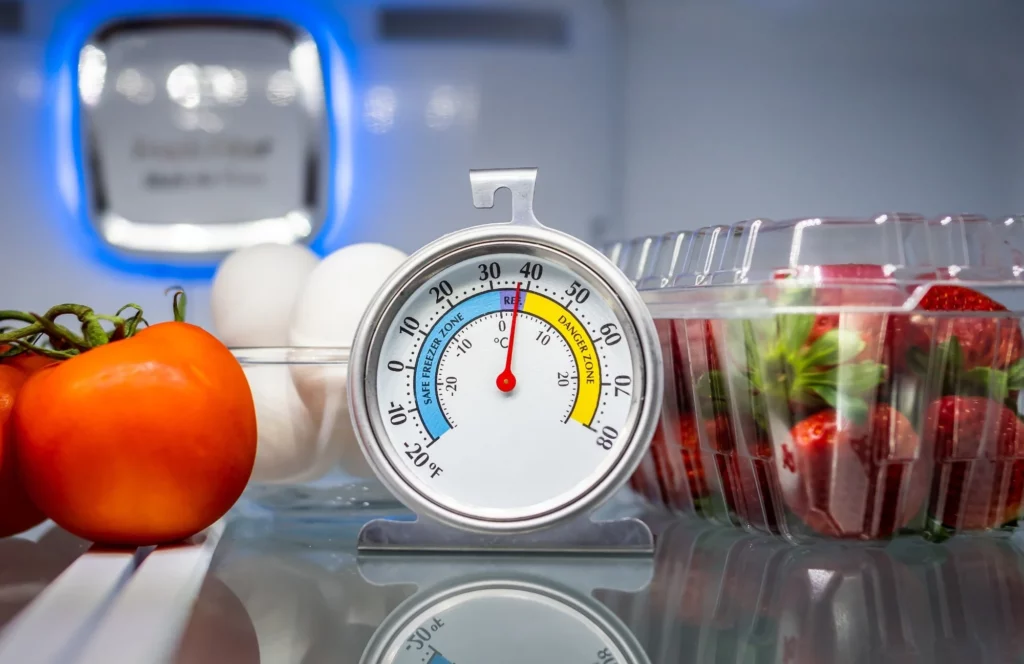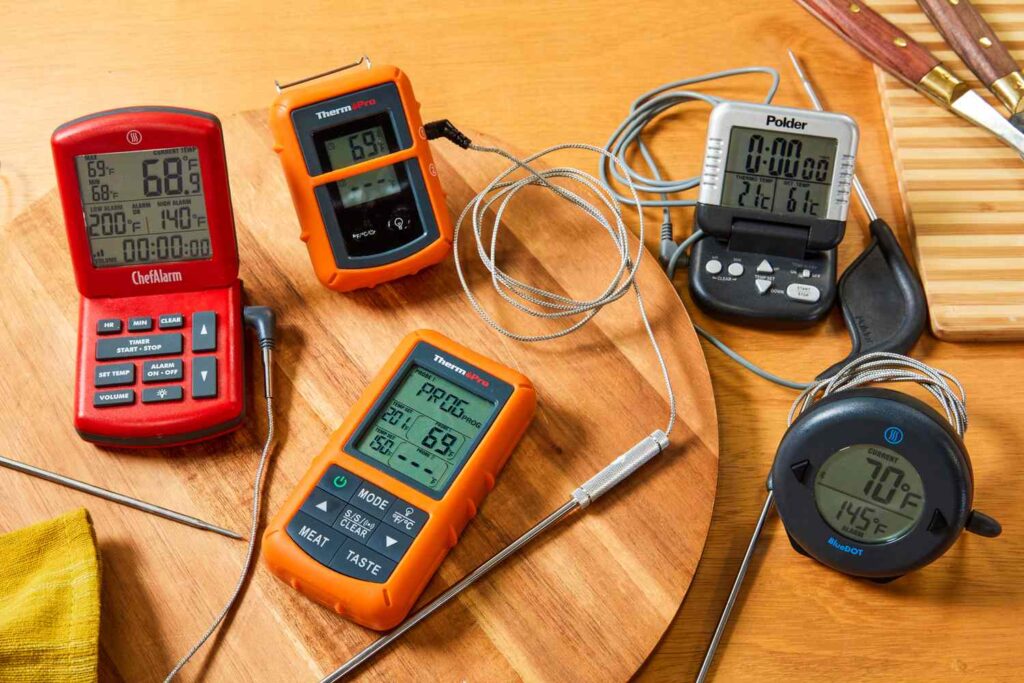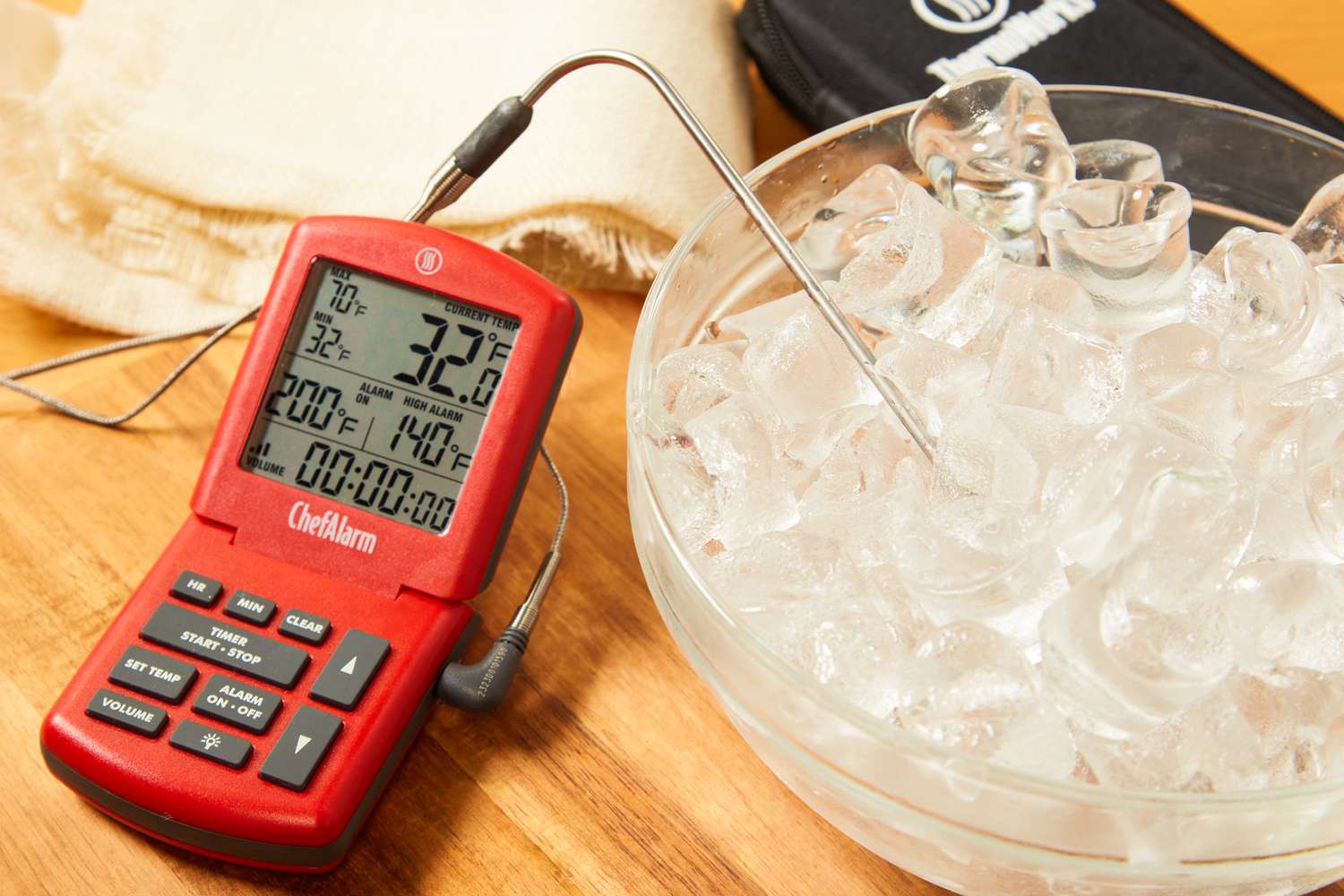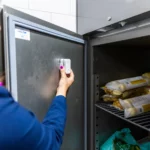- How Can Online Temperature Monitoring Systems Help Ensure Real-Time Food Safety Control?
- What Are the Key Components and Working Mechanisms of Online Temperature Monitoring Systems?
- Why Is Real-Time Temperature Monitoring Critical for Preventing Foodborne Illnesses and Ensuring Compliance with Food Safety Standards?
- How Do Online Temperature Monitoring Systems Enhance Accuracy, Efficiency, and Reliability in Food Safety Management?
- What Technologies Power Modern Online Temperature Monitoring Solutions?
- Which Industries Stand to Gain the Most from Implementing Online Temperature Monitoring Systems?
- How Do Custom Checklists and Automated Auditing Features Help with Compliance Management in Online Temperature Monitoring Systems?
- What Are the Key Benefits Businesses Can Expect from Implementing Online Temperature Monitoring Systems?
- How a Comprehensive Onboarding Process Supports Successful Adoption of Online Temperature Monitoring Systems
- What Future Trends Could Shape the Evolution of Online Temperature Monitoring Solutions for Enhanced Food Safety Management?
How Can Online Temperature Monitoring Systems Help Ensure Real-Time Food Safety Control?
Online temperature monitoring systems are a game-changer in food safety management. They combine sensor technology with internet connectivity to provide continuous oversight of food storage conditions. These systems use wireless sensors to track temperatures across multiple points in real-time, transmitting data to a centralised platform accessible through internet-connected devices.
The impact of these systems on food safety control is significant:
- 24/7 Temperature Surveillance: Automated sensors continuously monitor storage conditions, eliminating gaps in temperature tracking
- Instant Alert Notifications: Real-time alerts when temperatures deviate from safe ranges, enabling swift corrective actions
- Digital Documentation: Automated record-keeping replaces manual logs, ensuring accurate compliance documentation
- Remote Monitoring: Access temperature data from anywhere through secure cloud platforms

These capabilities transform food service operations by:
- Reducing food waste through early detection of equipment failures
- Minimising the risk of foodborne illness outbreaks
- Supporting compliance with food safety regulations
- Streamlining operational efficiency
- Protecting brand reputation through consistent food safety practices
For food service businesses, implementing an online temperature monitoring system means shifting from reactive to proactive food safety management. You gain precise control over storage conditions while reducing the labour costs associated with manual temperature checks.
The system’s ability to maintain detailed digital records proves invaluable during food safety audits, demonstrating your commitment to maintaining the highest standards of food safety control.
What Are the Key Components and Working Mechanisms of Online Temperature Monitoring Systems?
Modern temperature monitoring systems rely on several interconnected components working in harmony to deliver real-time food safety control. Here’s a detailed look at the essential elements:
Core Hardware Components:
- Wireless remote sensors with built-in temperature probes
- Hand-held digital thermometers for spot checks
- Gateway devices for data transmission
- Cloud-based servers for data storage
- Internet-connected display devices
The system operates through a sophisticated network of wireless sensors placed at critical monitoring points. These sensors continuously measure temperatures and transmit data through radio frequency signals to a central gateway.
Data Transmission Process:
- Sensors capture temperature readings at preset intervals
- Encrypted data packets travel via secure wireless protocols
- Gateway receives and processes incoming sensor data
- Cloud servers store and analyse the information
- System generates instant alerts for any deviations
The technology enables real-time monitoring through internet-connected devices. When temperatures fall outside preset safe ranges, the system triggers immediate notifications through:
Read more at: Fridge Monitoring Systems for HACCP-Compliant Food Storage
- SMS alerts
- Email notifications
- Mobile app push notifications
- Dashboard warnings

The integration of these components creates a robust monitoring ecosystem. You can access temperature data from any location using smartphones, tablets, or computers, allowing for swift response to potential food safety risks.
Modern systems also incorporate backup mechanisms:
- Local data storage during internet outages
- Battery backup for continuous operation
- Redundant sensors for critical areas
- Automated system health checks
Why Is Real-Time Temperature Monitoring Critical for Preventing Foodborne Illnesses and Ensuring Compliance with Food Safety Standards?
Temperature control is the most effective way to prevent harmful bacteria from growing in food. These bacteria can multiply quickly when food is stored or cooked at temperatures between 5°C and 60°C, which is known as the danger zone. To protect against this risk, it is crucial to monitor temperatures in real-time. Learn more about bacteria on https://www.ncbi.nlm.nih.gov/books/NBK8120/
1. Rapid Response to Temperature Breaches
With real-time monitoring, you can respond quickly if temperatures go out of the safe range. This means you can:
- Get instant alerts when temperatures deviate from safe ranges
- Take swift corrective actions to prevent food spoilage
- Keep digital records of the steps you took to fix the problem
2. Critical Control Point Management
Real-time monitoring also helps you manage critical control points in your food safety system. This includes:
- Continuously tracking high-risk food items
- Keeping automated temperature logs at specified intervals
- Verifying cooling and heating processes in real-time
3. HACCP Compliance Support
If you follow Hazard Analysis and Critical Control Points (HACCP) principles, real-time monitoring can support your compliance efforts by providing:
- Digital records for food safety audits
- Time-stamped temperature readings
- Detailed reports of temperature-related incidents
The benefits of real-time temperature monitoring go beyond just meeting regulatory requirements. When temperatures go outside the safe range, automated alerts allow staff to take immediate action – such as moving food to different storage, adjusting equipment settings, or throwing away compromised items.
These systems also create a continuous stream of temperature data that is necessary for HACCP compliance. By having comprehensive digital records that show consistent temperature control throughout storage, preparation, and service areas, food service operations can prove that they are doing everything possible to keep their customers safe.
Additionally, real-time monitoring helps reduce food waste by quickly identifying any problems with equipment. By catching temperature changes before they become critical issues, businesses can avoid large-scale spoilage events and maintain the quality of their products.
How Do Online Temperature Monitoring Systems Enhance Accuracy, Efficiency, and Reliability in Food Safety Management?
Traditional manual temperature logging presents significant challenges in food safety management:
- Time-consuming paper-based records
- Potential for transcription errors
- Delayed response to temperature breaches
- Missing or incomplete documentation
- Limited data accessibility
Online Temperature Monitoring Systems revolutionise this process through automated data collection. These systems capture temperature readings at preset intervals, creating digital records instantly accessible across internet-connected devices.
Key Accuracy Improvements:
- Elimination of manual recording errors
- Precise temperature measurements to 0.1°C
- Consistent monitoring intervals
- Tamper-proof data logs
- Real-time validation of readings
The automation of temperature monitoring delivers substantial operational benefits:
- Time SavingsNo manual checks required
- Instant digital documentation
- Quick access to historical data
- Enhanced Reliability24/7 continuous monitoring
- Automatic alerts for temperature breaches
- Backup systems for data storage
- Improved EfficiencyRemote monitoring capabilities
- Multi-site temperature tracking
- Automated compliance reporting
These systems integrate seamlessly with existing operations, requiring minimal staff training. The reduction in human intervention not only streamlines processes but also ensures consistent adherence to food safety protocols across all monitored areas.
What Technologies Power Modern Online Temperature Monitoring Solutions?
Modern temperature monitoring solutions use advanced technologies to provide reliable, real-time data tracking. At the core of these systems is LoRa communication technology – a long-range, low-power wireless platform designed for seamless connectivity over large distances. LoRa allows temperature sensors to send data reliably even through thick walls and across expansive facilities. Click here to find more about technology.
The Key Components of Temperature Monitoring Systems
The main components that make up these monitoring systems are:
1. Advanced Wireless Sensors
- Battery-operated devices with extended life spans
- Precision temperature measurement capabilities
- Robust construction for harsh environments
- Automatic data transmission at set intervals
2. Secure SaaS Platforms
- Cloud-based data storage and processing
- 24/7 accessibility from any internet-connected device
- Real-time alerts and notifications
- Automated compliance reporting features
These systems also work smoothly with important hardware parts:
- Temperature probes for spot checks
- Label printers for food safety documentation
- Mobile devices for on-the-go monitoring
- Gateway devices for data transmission
How LoRa Technology Enhances Temperature Monitoring
The combination of LoRa technology and cloud-based platforms creates a strong infrastructure that supports continuous monitoring without interruption. Data encryption and secure storage protocols protect sensitive information while maintaining accessibility for authorised personnel through user-friendly interfaces.
The scalable nature of these technologies allows businesses to expand their monitoring capabilities as needed, adding new sensors or connecting additional facilities to their existing system without significant infrastructure changes.
Which Industries Stand to Gain the Most from Implementing Online Temperature Monitoring Systems?
Online temperature monitoring systems deliver significant value across multiple sectors where food safety is paramount. Here’s how different industries benefit from these solutions:
1. Hospitality Industry
- Hotels and restaurants maintain precise temperature control for walk-in freezers
- Catering services track food temperatures during transport and service
- Bars ensure beverage cooling systems operate at optimal levels
2. Healthcare Facilities
- Hospital kitchens maintain strict food safety protocols for patient meals
- Medical storage units protect temperature-sensitive medications
- Cafeterias serve safe food to staff and visitors
3. Aged Care Centres
- Kitchen staff monitor food temperatures for vulnerable residents
- Storage facilities maintain safe conditions for specialised dietary requirements
- Multiple kitchen zones receive real-time temperature tracking
4. Supermarkets
- Display cases maintain consistent temperatures for fresh produce
- Cold storage rooms protect perishable inventory
- Refrigerated transport systems ensure safe delivery temperatures
These industries face stringent regulatory requirements and serve sensitive populations. Temperature monitoring systems help them:
- Reduce food waste through early detection
- Maintain compliance with food safety standards
- Protect their brand reputation
- Safeguard public health
- Streamline operational efficiency
The scalability of these systems allows businesses to monitor multiple locations from a central dashboard, making them particularly valuable for chains and franchises.
How Do Custom Checklists and Automated Auditing Features Help with Compliance Management in Online Temperature Monitoring Systems?
Custom checklists are essential for managing compliance effectively in online temperature monitoring systems. Through dedicated discovery calls and interactive demos, businesses can create checklists that perfectly match their specific operational needs and industry standards.
Key Benefits of Custom Checklists:
- Adaptable templates for different food safety situations
- Real-time tracking of task completion
- Instant notifications for missed checks
- Digital documentation of all safety procedures
The automated auditing capabilities turn traditional inspection processes into efficient digital workflows. These systems keep detailed records of:
- Temperature readings
- Food safety checks
- Corrective actions taken
- Staff compliance activities
Digital checklists solve the problems of paper-based record-keeping by offering:
- Centralised storage of data
- Quick access to past records
- Automated verification of timestamps
- Ability to include photo evidence
The integration of automated auditing features makes regulatory inspections easier by generating comprehensive reports whenever needed. Health inspectors can review digital records that show consistent temperature monitoring, food safety practices, and corrective actions taken – all accessible through a secure online platform.
These systems enable businesses to prove their commitment to food safety through detailed audit trails and automated compliance reporting. Staff members can follow standard procedures while managers have an overview of all food safety activities through real-time monitoring and automated alerts.
What Are the Key Benefits Businesses Can Expect from Implementing Online Temperature Monitoring Systems?
Online temperature monitoring systems deliver substantial business advantages through automated, real-time monitoring capabilities. These systems transform time-consuming manual processes into streamlined digital workflows.
Time Savings and Operational Efficiency
- Elimination of manual temperature logging tasks
- Instant access to temperature data from any device
- Automated report generation for compliance documentation
- Reduced staff training requirements
- Quick response times to temperature fluctuations
Cost Reduction Through Prevention
- Early detection of equipment malfunctions
- Immediate alerts prevent large-scale food spoilage
- Reduced energy consumption through optimised temperature control
- Decreased labour costs associated with manual monitoring
- Minimise risk of costly compliance violations
Food Waste Minimisation
- Real-time alerts enable swift corrective actions
- Precise temperature control extends food shelf life
- Data-driven inventory management
- Improved stock rotation based on temperature history
- Reduced product loss during transportation
The implementation of these systems creates a ripple effect of efficiency across operations. Businesses report up to 75% reduction in time spent on temperature monitoring tasks. The automated nature of these systems allows staff to focus on core business activities while maintaining consistent food safety standards.
Real-time monitoring capabilities enable proactive maintenance scheduling, reducing unexpected equipment breakdowns and associated costs. Data analytics provide valuable insights for optimising storage conditions and identifying patterns that might affect food quality.
How a Comprehensive Onboarding Process Supports Successful Adoption of Online Temperature Monitoring Systems
A well-structured onboarding process serves as the foundation for successful implementation of temperature monitoring systems. Through personalised demos, businesses gain hands-on experience with the system’s features before making a purchase decision.
These interactive demo sessions allow you to:
- Test real-time temperature monitoring capabilities
- Experience alert systems and notification settings
- Navigate through data analytics dashboards
- Understand compliance reporting features
- Ask questions specific to your business needs
Dedicated onboarding specialists work with your team to create customised implementation plans. This personalised guidance ensures the system aligns perfectly with your existing operational workflows and food safety protocols.
The onboarding process typically includes:
- Initial system configuration
- Staff training sessions
- Custom checklist creation
- Integration with existing hardware
- Setup of reporting parameters
Professional vendors provide 24/7 live chat support throughout the implementation phase. This constant availability helps resolve technical issues promptly and maintains operational continuity during the transition period.
A robust onboarding programme also includes regular check-ins to assess system adoption rates and address any challenges. These follow-up sessions help fine-tune the system’s configuration based on real-world usage patterns and staff feedback.
What Future Trends Could Shape the Evolution of Online Temperature Monitoring Solutions for Enhanced Food Safety Management?
The future of food safety management promises groundbreaking advancements through IoT and AI integration. Next-generation IoT sensors will offer enhanced precision and expanded monitoring capabilities:
Advanced Sensor Networks
- Multi-parameter monitoring (temperature, humidity, air quality)
- Extended battery life and improved durability
- Smaller, more discrete form factors
- Enhanced wireless range and connectivity
AI-powered systems will transform data analysis and risk management:
Predictive Analytics
- Early detection of equipment malfunctions
- Identification of potential food safety risks
- Pattern recognition for optimised operations
- Automated compliance recommendations
Enhanced data analytics capabilities will revolutionise decision-making:
Smart Insights
- Real-time trend analysis
- Custom reporting dashboards
- Cross-location performance comparisons
- Resource optimisation suggestions
These technological developments will create intelligent food safety ecosystems that:
- Predict and prevent safety incidents before they occur
- Reduce operational costs through automated processes
- Provide deeper insights into food safety patterns
- Enable proactive maintenance scheduling
- Support data-driven decision making
The integration of these advanced technologies will establish new standards in food safety management, ensuring higher levels of compliance and operational efficiency across the food service industry.



